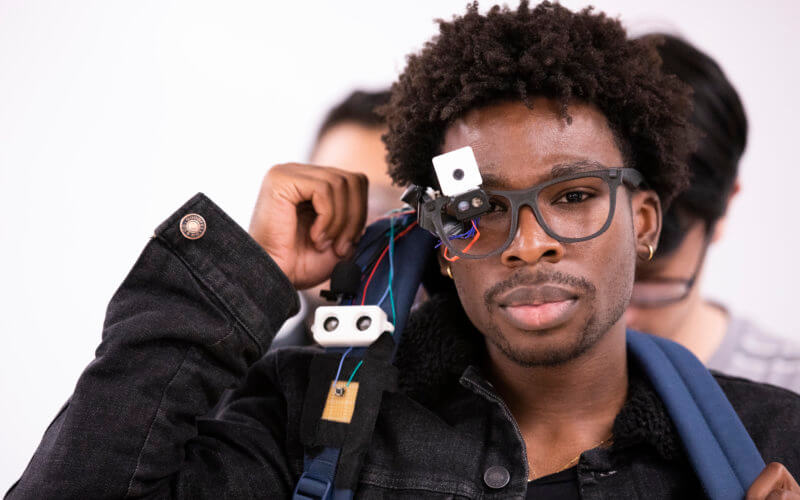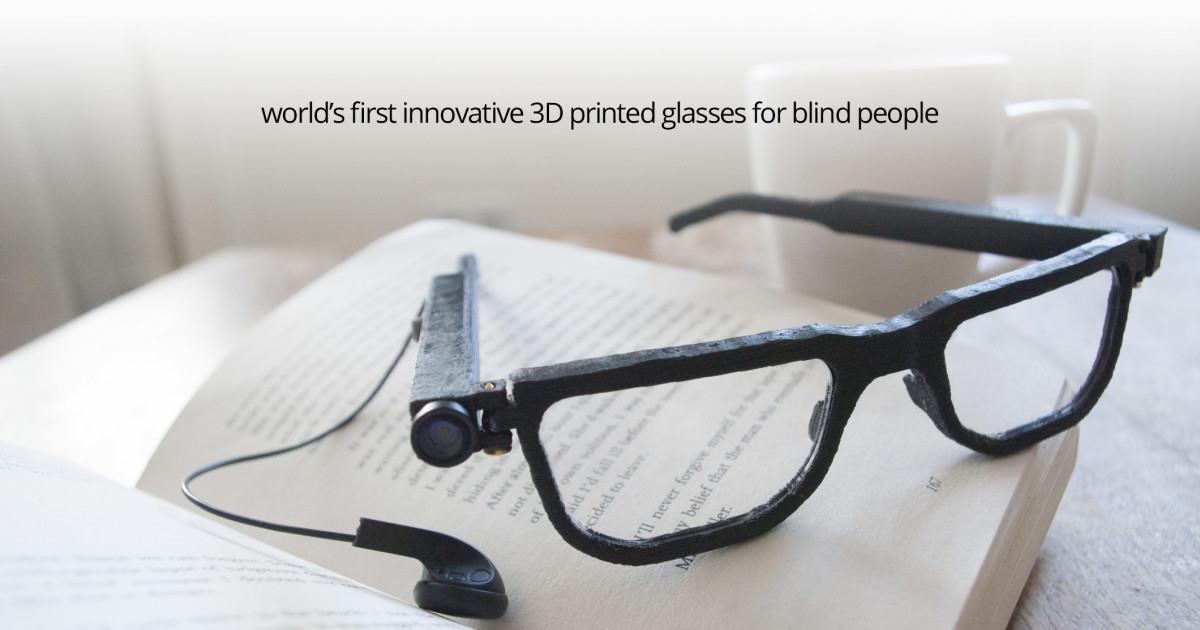Voice-Activated Assistive Devices: Empowering the Visually Impaired Through Innovation
Wiki Article
Enhancing Access Through Assistive Modern Technology for the Blind
The assimilation of assistive technology for the blind represents a crucial innovation in access, basically changing exactly how individuals browse their environments and involve with society. As we check out the varied kinds of assistive devices and their substantial impacts on day-to-day living, it ends up being important to examine exactly how ongoing technical developments are reshaping the landscape of support for the blind community.Introduction of Assistive Technology
Assistive technology describes a variety of tools and software designed to boost the abilities of people with handicaps, including those who are aesthetically damaged or blind. This modern technology plays a vital role in advertising independence and boosting the high quality of life for users. By supplying different approaches for accessing info and carrying out day-to-day tasks, assistive modern technology encourages individuals to navigate their settings much more properly.
The advancement and application of assistive modern technology embrace a variety of principles focused on cultivating availability. These concepts consist of user-centered design, which focuses on the demands and choices of the person, and the integration of technology into daily activities. Such innovations ensure that assistive tools are not only useful but additionally intuitive and simple to use.
In addition, assistive technology includes a diverse spectrum of services, from low-tech alternatives like magnifiers to state-of-the-art innovations such as screen visitors and Braille screens. The continuous evolution of this area is driven by the requirement to deal with the one-of-a-kind obstacles dealt with by individuals with visual disabilities (Wearable technology for low vision). As innovation continues to development, the possibility for improving accessibility and promoting inclusivity continues to be appealing, ultimately adding to an extra fair culture

Sorts Of Assistive Gadgets
Various sorts of assistive tools are available to support individuals that are blind or visually damaged, each developed to address particular requirements and challenges. These tools can be generally categorized right into 3 major types: low-tech, mid-tech, and modern services.Low-tech tools consist of products such as magnifiers, Braille tags, and responsive maps. These are fairly simple tools that improve the user's capacity to connect with their environment without needing intricate modern technology.
Mid-tech tools typically entail more innovative functions, such as digital magnifiers and portable Braille note-takers. These tools can use performances like speech output, enabling users to gain access to details a lot more effectively.

Influence On Daily Living
The accessibility of various assistive devices dramatically enhances the quality of life for individuals who are visually damaged or blind, affecting their everyday living in profound ways. By incorporating modern technologies such as screen visitors, Braille shows, and audio summary services right into their regimens, individuals get better freedom and freedom. These devices assist in accessibility to details, making it possible for people to carry out everyday tasks, such as reading e-mails, browsing public spaces, and appreciating media material.Additionally, assistive tools encourage individuals to involve even more completely in social interactions and neighborhood tasks. The capacity to utilize smart devices furnished with ease of access features enables smooth communication and connection with others. This connectivity cultivates a feeling of belonging and lowers feelings of isolation.
In professional settings, assistive modern technology supports efficiency by allowing people to complete work tasks efficiently. Tools like voice recognition software and specialized zoom devices allow customers to join the labor force on equivalent ground with their sighted peers.

Improvements in Innovation
Recent technical improvements have actually significantly transformed the landscape of tools offered for individuals who are aesthetically impaired or blind. The assimilation of synthetic intelligence (AI) and artificial intelligence has actually triggered applications that enhance navigating and things recognition. Smart device applications can now utilize AI to recognize and describe environments in real-time, giving individuals with useful contextual info.Furthermore, advancements in haptic modern technology have caused the advancement of wise walking sticks outfitted with sensing units that spot challenges and offer responsive feedback. This equips customers to navigate their atmosphere with increased self-confidence and freedom. Moreover, innovations in text-to-speech software application and braille display screens have boosted the access of electronic web content, enabling for seamless communication with numerous media.
Wearable technologies, such as wise glasses, are additionally making strides in helping aesthetic disability. As technology continues to evolve, the possibility for also more transformative devices continues to be on the horizon.
Future Trends and Innovations
As modern technology rapidly proceeds, the future of assistive devices for individuals who are blind holds immense guarantee. Advancements in look these up expert system (AI) and artificial intelligence are poised to revolutionize the method blind users connect with their settings. As an example, AI-driven applications are being developed to boost item acknowledgment, permitting customers to identify and browse their environments with higher ease and precision.
Additionally, developments in haptic comments innovation are allowing the creation of tactile maps and navigation aids that provide real-time information via touch. These developments not just boost movement however likewise foster freedom. Additionally, wearable devices furnished with augmented learn the facts here now reality (AR) attributes are arising, offering individuals aesthetic information via sound summaries, thus linking the space in between the physical and electronic worlds.
Moreover, the combination of smart home technology provides new chances for access, allowing people to regulate their living settings via voice commands or mobile phone applications. As cooperation between tech programmers and the blind neighborhood continues, the focus on user-centered layout will certainly guarantee that future innovations are tailored to satisfy the one-of-a-kind requirements of this population (Wearable technology for low vision). The trajectory of assistive technology assures a more inclusive and empowering future for individuals that are blind
Conclusion
Finally, assistive technology plays a vital role in improving accessibility for people with aesthetic disabilities. The varied range of gadgets, including display readers and wise walking sticks, substantially enhances everyday living and cultivates freedom. Continuous innovations in innovation and user-centered style make sure that these devices cater properly to the distinct requirements of the blind community. As technologies progression, enhanced inclusivity and empowerment can be expected, ultimately enhancing the quality of life for those impacted by aesthetic problems.The combination of assistive modern technology for the blind stands for an essential development in access, basically changing just how individuals navigate their atmospheres and engage with culture.Assistive innovation refers to a variety of tools and software program developed to boost the capacities of individuals with disabilities, consisting of those who are aesthetically impaired or blind. Wearable technology for low redirected here vision.As modern technology swiftly advances, the future of assistive devices for people that are blind holds enormous guarantee. The trajectory of assistive modern technology assures an extra empowering and inclusive future for individuals who are blind
In final thought, assistive modern technology plays an essential duty in enhancing ease of access for people with aesthetic impairments.
Report this wiki page